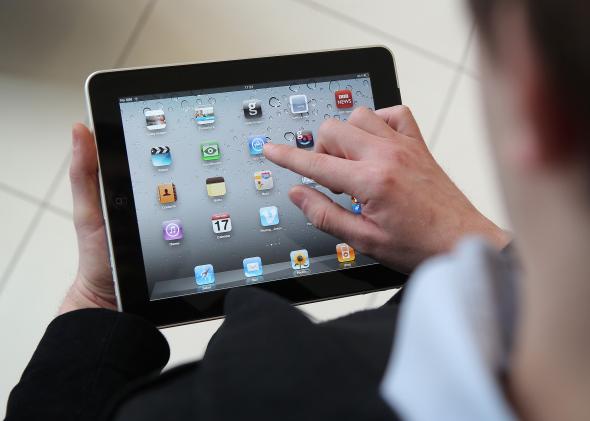Tech Time Warp: Get a Glimpse of the Lost Touchscreen Tablet of 1992
Reprinted from 

Photo Illustration by Peter Macdiarmid/Getty Images
This was a good week if you’re a gadget geek. First, Google unveiled a media streaming device and two new tablets, and then Apple graced the world with the iPad Mini 7.
But the true gadget geek will tell you that none of this compares to The Star7, one of the great lost gadgets of tech history.
Designed by Sun Microsystems, the Star7 appeared in the early ’90s—a handheld touchscreen device that predated the iPhone by fifteen years. No, the thing never made it to market. But it was real. In the video below, you can see the Star7 in all its glory, demoed by James Gosling, the same guy who created the Java programming language. It offers everything from a gesture interface to wireless networking.
It just goes to show that many things that seem like new ideas are actually improvements of ideas that have existed for a long time. Heck, some of tools rolled in the Star7 had already been around for several years. HP had a touchscreen computer back in 1983, and Psion was selling a handheld computer as early as 1984.
Nonetheless, the Star7 was ahead of its time. The Apple Newton wouldn’t arrive for another year, and it only had a monochrome display.
Sun had created a special engineering team to prepare for the “next wave” of computing, and they decided to focus on the convergence between computers and home entertainment systems, such as the television. Soon, they launched something called the “Green Project” to create a system of devices that could communicate with each other wirelessly—sort of a precursor of today’s “Internet of Things” idea. The Star7—also called the *7—was to be the center of the system.
Although it’s often described as a PDA today, the Star7 was actually more of a tablet computer, one specifically designed to interact with your television set. You could browse a television guide, pick a show, and then drag its icon onto a picture of a VCR to play it. But it was more than just a high-tech remote control. You could also share content between Stay7 devices. Gosling shows off a tool called “white boards,” which not only let scrawl handwritten notes, but drag stuff to someone else’s device.
The prototype was finished in 1992, and Sun began shopping the idea around to cable television companies, but couldn’t find any takers. “It was interactive, and users could read and write information into the system,” Gosling was quoted as saying in a story originally posted on Sun’s site. “But the companies didn’t want to lose that much control.”
Although the Star7 was never produced, one major product came out of the Green Project: the Java programming language. Gosling and his team created the language, initially called Oak, that enabled them to write software that could run on a wide variety of different hardware architectures.
Today, Sun is dead, eaten whole by Oracle. But Java is bigger than ever. And the Star7 still rocks.
More from Wired:
Future Tense is a partnership of Slate, New America, and Arizona State University.
